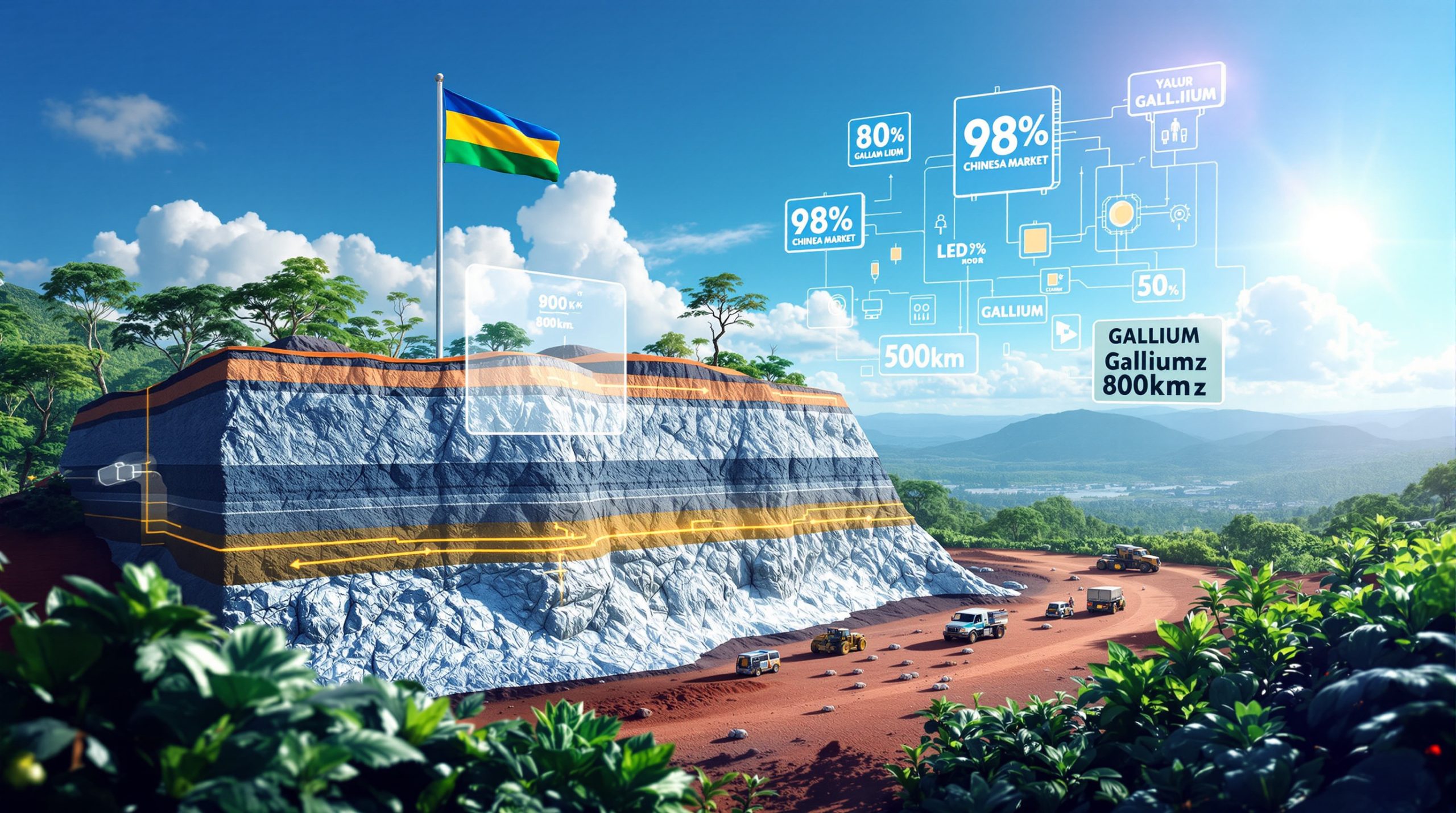How Does the EU Carbon Border Adjustment Mechanism Work? Understanding CBAM's Core Framework The Carbon Border Adjustment Mechanism represents a groundbreaking climate policy designed to prevent "carbon leakage" by equalizing carbon costs between EU and non-EU producers. Set for full implementation in 2026, this mechanism will impose carbon pricing on imports from countries with less stringent climate regulations, creating a level playing field for carbon-intensive sectors. According to the European Commission, CBAM aims to put a fair price on the carbon emitted during the production of carbon-intensive goods entering the EU, encouraging cleaner industrial production in non-EU countries. This innovative approach extends the EU's internal carbon pricing to external trade partners, establishing what many analysts consider the world's first comprehensive carbon border tax. Key Timeline and Implementation Phases CBAM follows a carefully structured rollout schedule to allow industries time to adapt: 2023-2025: Transitional reporting period with data collection requirements 2026: Full implementation with financial obligations beginning 2026-2034: Gradual phase-out of free allowances under the EU ETS Post-2034: Complete carbon pricing on all covered imports The transitional period is designed to ease administrative burdens while allowing companies to develop robust carbon accounting systems. During this phase, importers must report emissions without financial obligations, providing valuable preparation time before full implementation. Carbon Pricing Structure and Calculation Method The carbon tax calculations involve several complex components: Direct emissions from production processes (Scope 1) Indirect emissions from electricity consumption (Scope 2) The prevailing EU ETS carbon price (projected to reach €60-70 per tonne CO₂ by 2026) A formula that accounts for any carbon pricing already paid in the country of origin This calculation methodology ensures proportional taxation based on actual carbon content while preventing double taxation where carbon pricing already exists. The system incentivizes detailed emissions reporting, as default values applied when data is unavailable typically reflect the highest carbon intensity in the product category. Why Is India's Steel Industry Particularly Vulnerable? Export Dependency on European Markets India's steel export profile reveals significant vulnerability to EU carbon regulations, creating a concentrated exposure risk. Steel Secretary Sandeep Poundrik confirmed at the FT Live Energy Transition Summit that "roughly two-thirds of India's steel exports go to Europe, while exports to the U.S. are negligible." This heavy reliance on European buyers creates a strategic weakness in India's export position. With limited market diversification, Indian steel producers face disproportionate exposure to EU regulatory changes compared to competitors with more balanced export destinations. Furthermore, this dependency makes energy transition strategies increasingly important for maintaining market competitiveness. High Carbon Intensity of Indian Steel Production The carbon footprint of Indian steelmaking creates substantial challenges under CBAM: Indian steel production averages significantly higher emissions than global competitors Most production relies on blast furnace-basic oxygen furnace (BF-BOF) routes These methods are substantially more carbon-intensive than electric arc furnace alternatives Limited implementation of carbon capture or efficiency technologies compounds the issue As Poundrik acknowledged, "Indian steel is predominantly produced using blast furnaces, where emissions are high," adding that "further addition of blast furnace capacity is an area of concern." This official recognition highlights the technological challenge facing the industry. Competitive Disadvantage Against Greener Producers When CBAM takes effect, Indian steel will face multiple competitive challenges: Price disadvantages against steel from countries with lower emission intensities Competitive pressure from producers using electric arc furnace (EAF) technology Market share threats from nations with established carbon pricing systems Challenges meeting EU verification and documentation requirements This multi-dimensional disadvantage threatens to reshape competitive dynamics, potentially shifting market share toward producers in countries with either cleaner production methods or existing carbon pricing mechanisms that can offset CBAM charges. What Financial Impact Will CBAM Have on Indian Steel? Calculating the Additional Cost Burden The financial implications for Indian steel exporters are substantial: Carbon price estimated at approximately €60-70 per tonne CO₂ in 2026 For typical Indian steel, this adds a significant cost premium per tonne The percentage cost increase will likely reach double digits for most producers The burden will grow annually as free allowances phase out (5% increase per year) These costs represent a transformative shift in steel export economics, requiring fundamental reconsideration of pricing strategies, product positioning, and long-term market viability in the European steel trade. In contrast, producers who adopt mining decarbonisation benefits early may gain competitive advantages. Impact on Price Competitiveness The added costs will significantly affect India's market position: Factor Pre-CBAM Post-CBAM Implementation Price competitiveness Strong position in EU markets Significant disadvantage vs. greener producers Cost structure Production costs primary factor Carbon intensity becomes major cost driver Market segmentation Broad access to EU market Potential restriction to lower-value segments Profit margins Sustainable for most producers Severely compressed for high-carbon producers This dramatic shift in competitive positioning will force strategic reconsideration, with carbon management becoming as important as traditional cost factors like labor, energy, and raw materials in determining market viability. Long-term Market Access Concerns Beyond immediate price impacts, Indian exporters face: Potential loss of EU market share to lower-carbon competitors Difficulty maintaining price competitiveness as carbon prices rise Increased compliance and verification costs Risk of being priced out of premium steel segments The cumulative effect may reshape trade patterns permanently, potentially forcing Indian producers to seek alternative markets or accelerate technological transformation to remain competitive in the European market. How Can India's Steel Industry Adapt to CBAM? Technological Transformation Opportunities Several technological pathways could reduce carbon liability: Transitioning from BF-BOF to electric arc furnace (EAF) production Implementing carbon capture utilization and storage (CCUS) technologies Exploring hydrogen-based direct reduced iron (DRI) processes Optimizing existing facilities for maximum energy efficiency Each pathway offers different advantages in terms of implementation timeframe, capital requirements, and emissions reduction potential. A strategic approach likely involves phased implementation of multiple technologies based on facility-specific circumstances. Policy and Regulatory Responses The Indian government has several options to support the industry: Developing a national "green steel" standard targeting lower emissions intensity Expanding domestic carbon pricing to enable deduction from EU CBAM charges Negotiating bilateral agreements with the EU for special considerations Creating financial incentives for decarbonization investments Effective policy responses must balance short-term competitiveness protection with long-term technological transformation incentives to create a sustainable transition pathway. Additionally, understanding the US tariffs impact analysis can help inform comprehensive trade strategies. Industry Collaboration and Knowledge Sharing Collective action could accelerate adaptation: Establishing industry-wide carbon accounting standards Sharing best practices for emissions reduction Joint investment in research and development Creating industry-specific transition roadmaps Collaborative approaches can reduce individual company costs while accelerating learning curves across the sector, potentially creating economies of scale in technology implementation and verification systems. What Are the Global Trade Implications Beyond Steel? Expansion to Other Carbon-Intensive Sectors CBAM's impact extends beyond steel to other Indian exports, as confirmed by Steel Secretary Poundrik, who noted the mechanism will affect "steel, aluminium and cement" exports. This multi-sector impact creates compounding challenges for India's export economy. The current scope includes: Aluminum production (highly electricity-intensive) Cement manufacturing Fertilizer production Hydrogen (as CBAM expands to cover this sector) Potential future expansion to other carbon-intensive goods This sectoral breadth means CBAM represents a structural shift in trade economics rather than an isolated industry challenge, requiring coordinated cross-sectoral response strategies. Precedent for Global Carbon Border Adjustments The EU's policy is likely to inspire similar measures worldwide: The UK is developing its own CBAM-like mechanism The US is considering carbon border adjustment proposals Canada is exploring border carbon adjustments This could create a cascade of similar policies affecting global trade This potential policy cascade could fundamentally reshape global trade dynamics, creating complex interactions between different carbon pricing systems and potentially fragmenting markets based on carbon intensity and regulatory alignment. The EU's approach to Europe's critical minerals also signals broader resource policy shifts. Reshaping Global Supply Chains CBAM and similar policies will drive structural changes: Increased regionalization of carbon-intensive production Premium pricing for low-carbon materials New competitive advantages for early decarbonizers Potential relocation of high-carbon production to markets without carbon pricing These changes may fundamentally alter global trade patterns, creating new winners and losers based on carbon intensity rather than traditional competitive factors. How Does CBAM Compare to Other Trade Challenges? US Tariffs vs. EU Carbon Tax Different trade measures present varied challenges for Indian steel: US tariffs have minimal impact due to negligible export volume EU carbon tax affects two-thirds of India's steel exports US measures are politically motivated and potentially temporary EU measures are climate-policy driven and structurally permanent This contrast is confirmed by Steel Secretary Poundrik's assessment that India's steel industry "will not see much direct impact from U.S. tariffs, but the European Union's carbon tax will affect steel exports," according to Reuters. The differential impact highlights the strategic importance of addressing CBAM specifically. India's Safeguard Duties on Imports India's own trade protections reveal policy tensions: India has proposed 11-12% import tariffs on certain steel products These primarily target low-cost imports from China Domestic protection while facing export challenges creates policy contradictions Balancing import competition and export competitiveness requires careful calibration As Poundrik noted, "India remains concerned about cheap imports and he expects the government to take a decision on the import tariffs, locally known as safeguard duty, in line with the proposed duty rate." This approach creates complex policy interactions between import protection and export promotion. Comparative Impact on Trade Balance The relative severity of various trade measures shows CBAM's significance: CBAM potentially affects billions in annual Indian steel exports to the EU US tariffs impact a much smaller trade volume Chinese imports to India represent a substantial but separate trade flow CBAM emerges as the most consequential trade challenge by value This comparative impact assessment helps prioritize policy responses, focusing resources on the measures most likely to affect India's overall trade balance and industrial competitiveness. What Are the Long-term Strategic Implications? Accelerating Green Transition in Manufacturing CBAM will likely catalyze broader industrial transformation: Creating economic incentives for green steel investments Accelerating technology adoption timelines Driving innovation in low-carbon production methods Potentially positioning early adapters for competitive advantage While presenting immediate challenges, CBAM could ultimately strengthen India's industrial competitiveness by forcing modernization that might otherwise be delayed, creating longer-term efficiency and environmental benefits. Such changes align with broader mining industry innovation trends worldwide. Reshaping India's Export Strategy Strategic responses may include: Diversifying export markets beyond the EU Specializing in lower-carbon steel products for premium markets Developing differentiated product offerings for carbon-regulated vs. unregulated markets Creating "green steel" certifications and branding This strategic repositioning represents a fundamental rethinking of India's place in the global steel market, potentially creating new competitive advantages through specialization and market segmentation. New Financing Models for Decarbonization The transition will require innovative capital approaches: Green bonds specifically for steel decarbonization Climate finance mechanisms targeting high-emission sectors Public-private partnerships for technology deployment International climate finance support for developing economies These financing innovations could create new investment opportunities while addressing the substantial capital requirements of industrial transformation, potentially creating virtuous cycles of green investment and returns. What Immediate Actions Should Stakeholders Take? For Steel Producers Urgent preparatory steps include: Conducting detailed carbon footprint assessments Developing product-specific emissions data Creating CBAM compliance systems and documentation Evaluating technological options for emissions reduction Engaging with EU importers about verification requirements Early action can create competitive advantages through better preparation, potentially creating cost savings through systematic rather than rushed implementation of necessary changes. For Government Policymakers Policy priorities should focus on: Accelerating development of India's carbon market mechanisms Negotiating with the EU on implementation timelines and transition support Creating financial incentives for industrial decarbonization Developing standardized emissions reporting frameworks Supporting research and development in low-carbon steelmaking Effective policy responses require balancing multiple objectives across economic competitiveness, industrial modernization, and climate commitments, necessitating coordinated approaches across government departments. For Investors and Financial Institutions Capital allocation strategies should consider: Assessing CBAM exposure in steel company portfolios Developing green finance products for steel decarbonization Incorporating carbon price forecasts into valuation models Supporting transition planning through specialized financing Engaging with companies on climate risk disclosure Forward-looking investment strategies can identify both risks and opportunities in the transition, potentially creating new value through early identification of winners in the green steel transformation. FAQ: Key Questions About CBAM and Indian Steel Will CBAM Apply to All Indian Steel Exports? CBAM will apply to specific steel products exported to the EU, not to exports to other markets. The mechanism covers products categorized under specific CN codes, primarily focusing on primary steel products and certain finished steel goods. The selective application creates strategic opportunities for market diversification and product specialization, potentially allowing continued production of carbon-intensive steel for markets without carbon border adjustments alongside greener production for EU markets. Can India Negotiate an Exemption from CBAM? While India has sought exemptions, full exemptions are unlikely. However, the EU-India Strategic Partnership Agreement provides for deductions of carbon prices already paid in India, potentially reducing the financial burden on exporters. This creates important policy incentives for India to develop its own carbon pricing mechanisms, as domestic carbon prices could become partially deductible from CBAM obligations, creating a win-win for climate policy and export competitiveness. How Will CBAM Verification Work for Indian Exporters? Exporters must provide verified emissions data for their products, including both direct and indirect emissions. This requires establishing monitoring, reporting, and verification systems that meet EU standards, representing a significant administrative challenge. The verification systems represent both a cost and an opportunity, as better data can reduce tax liability through accurate reporting while creating internal insights for emissions reduction strategies that create broader business benefits. What Happens If Exporters Cannot Provide Emissions Data? If verified emissions data is unavailable, default values based on the worst-performing 10% of EU producers for that product will be applied, likely resulting in higher carbon costs than if actual data were provided. This creates strong incentives for rapid development of emissions accounting systems, as the penalty for non-reporting could be substantial additional costs that might exceed the actual carbon intensity of the products. Ready to Stay Ahead of Major Mineral Discoveries? Discover why significant mineral finds can lead to substantial returns by exploring Discovery Alert's dedicated discoveries page, where our proprietary Discovery IQ model delivers real-time alerts on major ASX mineral announcements. Begin your 30-day free trial today at https://discoveryalert.com.au/discoveries/ to position yourself ahead of the market.

Enbridge’s $2 Billion Plan Transforms North America’s Heavy-Crude Network
Enbridge’s $2B pipeline expansion adds 250,000 bpd capacity, transforming heavy



